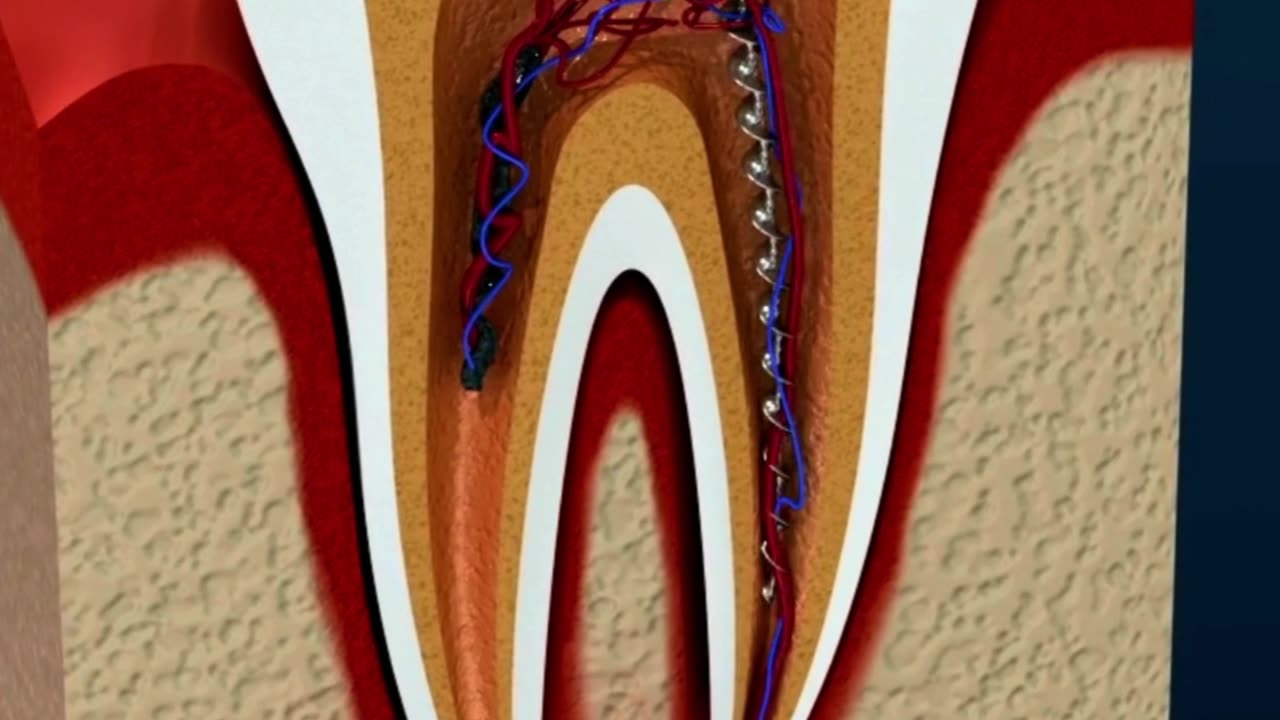Premium Only Content

Root Canal Treatment - RCT
Imagine your tooth as a castle, with the enamel serving as the strong exterior wall that defends the pulp inside. Because it contains the nerves and blood arteries that keep the tooth alive and healthy, the pulp is like the king and queen of the castle.
Consider that little microorganisms are attempting to breach the castle walls like small invaders. They produce acid that erodes the tooth's enamel and causes a hole or cavity. Invaders have the ability to finally penetrate the walls and get to the pulp if they are not stopped.
Because the pulp becomes infected and enlarged and forms an abscess, which is a pus-filled pocket, this can be quite painful. A dentist or endodontist must treat a tooth abscess, just like a real-life abscess that must be drained.
The dentist performs a root canal by cleaning the inside of the tooth and entering the tooth like a mediaeval surgeon would. Typically, the process requires one or more appointments. The dentist will initially use a local anesthetic to numb the area around the tooth before making an aperture in the top of the tooth to reach the pulp. The dentist will then use tiny instruments to remove the diseased or damaged pulp, clean and sanitize the inside of the tooth and its canals, and then fill the canals with gutta-percha, a material that resembles rubber. Then, a filling or a temporary crown will be used to temporarily close the opening in the tooth.
The dentist will examine the tooth's recovery at the subsequent appointments, and if all is well, they will place a crown or permanent filling to restore the tooth's form and function. In this way, tooth decay resembles an invasion of your tooth and, if addressed, can result in an abscess. By removing the infected pulp, cleaning, and sealing the tooth canals, root canal therapy can save the tooth. The tooth is subsequently covered with a filling or a crown to prevent further damage.
-
 3:59:36
3:59:36
StevieTLIVE
6 hours agoFriday Night Warzone HYPE
33.9K1 -
 3:47:10
3:47:10
SynthTrax & DJ Cheezus Livestreams
1 day agoFriday Night Synthwave 80s 90s Electronica and more DJ MIX Livestream Michael Jackson / AI Art Compilation Edition
39.9K -
 1:03:57
1:03:57
Sarah Westall
6 hours agoMara Lago Accord Joins the Fed, Fed Waves the White Flag & more w/ Andy Schectman
22K -
 2:44:12
2:44:12
I_Came_With_Fire_Podcast
1 day ago*BREAKING* Special Guest Katarina Szulc
32K5 -
 3:22:20
3:22:20
megimu32
6 hours agoOFF THE SUBJECT: FAFO Friday! Bodycams & Mario Kart Mayhem!
21.6K4 -
 55:36
55:36
Flyover Conservatives
1 day ago4 Strategies to Create Opportunity from Nothing - Clay Clark | FOC Show
27.3K -
 1:49
1:49
Gaming on Rumble
11 hours agoWhat is the Rumble Creator Program!?!? (Active Premium Creators) | Lvl UP
27.3K2 -
 5:56:26
5:56:26
Midnight In The Mountains
8 hours agoGaming w/ PER·SE·VER·ANCE | Midnights Play Fortnite | Split Screen Action!
18.2K2 -
 3:56:17
3:56:17
Nerdrotic
10 hours ago $13.80 earnedLet's TACO-bout Take Us North, Hollywood COPE! Cracker Barrel CRACKED! | Friday Night Tights 369
95.2K8 -
 1:16:30
1:16:30
RiftTV
9 hours agoHow Blue Light is Turning You Gay | The Rift | Guest: Jack Kruse
32.9K10